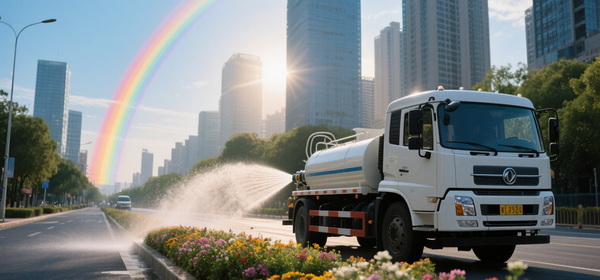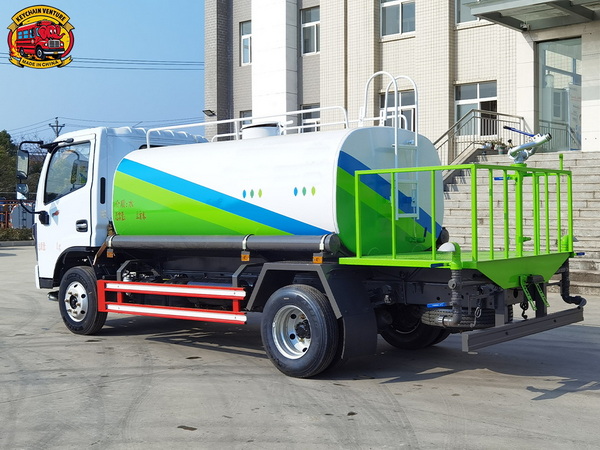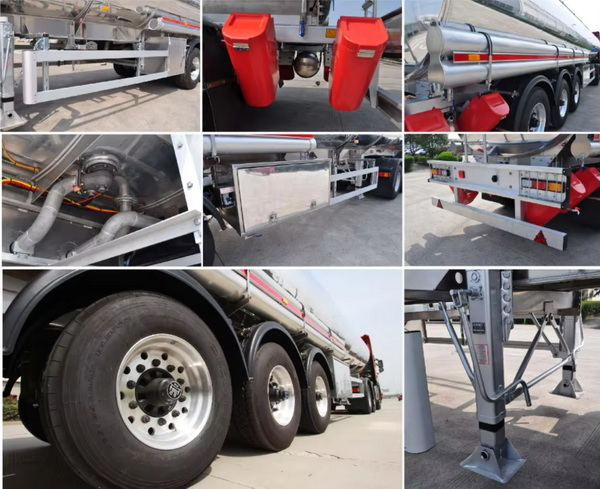Views: 222 Author: Amanda Publish Time: 2025-11-07 Origin: Site








Content Menu
● Why Licensing Matters for Water Trucks
● CDL Classifications and Tank Endorsements
● State and national variation
● Operational and Safety Considerations
● Paths to Licensing and Certification
● Employer Considerations for Water Truck Fleets
● Technology and Training Resources
● FAQs
>> 1. What is the typical minimum age requirement for obtaining a CDL in most regions?
>> 2. What are the steps to obtain a Tank endorsement for a Water Truck?
>> 3. Is a Hazmat endorsement required for water transportation, or only for hazardous liquids?
>> 4. Can water trucks operate across state lines, and what changes if traveling interstate?
>> 5. What kinds of jobs commonly hire water truck operators, and what is the career outlook?
In the commercial vehicle sector, water trucks play a vital role across construction, mining, agriculture, municipal services, and emergency response. These versatile assets are essential for dust control, slope stabilization, dust suppression on highway projects, irrigation for vegetation, firefighting support, and decontamination operations in industrial sites. The question of whether a commercial driver's license (CDL) is required to operate a Water Truck is common among fleet managers, safety officers, and drivers seeking to advance their careers. The short answer: in most jurisdictions, a CDL is required, often with a tank endorsement; however, the specifics depend on vehicle weight, configuration, and intended use. This article provides a comprehensive overview of licensing requirements, practical guidance for drivers and employers, and considerations for fleet optimization, with a focus on water trucks used in both domestic and international contexts.

A water truck is a specialized heavy vehicle designed to transport and deploy large volumes of water. Common configurations include straight trucks with onboard tanks and spray equipment, as well as tractor-trailer combinations designed to haul larger water loads. Key features typically include a water tank, pump system, hoses or spray booms, and control valves that enable targeted distribution. Depending on the application, water trucks may be configured for constant water delivery on job sites, firefighting support, dust suppression on roadways, or civil works where large volumes of water are necessary for compaction and soil stabilization.
Licensing requirements are driven by the vehicle's weight, its cargo (water), and how the vehicle operates within a given jurisdiction. In many regions, large single-unit trucks and most tractor-trailer combinations fall under CDL rules. Tank-specific operations often require a Tank endorsement (T) in addition to the standard CDL class. This endorsement covers the unique hazards of transporting liquids, including surge effects, liquid dynamics within a tank, and the handling of pour and discharge systems. Compliance reduces risk for drivers, operators, and the public while ensuring that fleets can legally deploy water trucks for regulated work.
- Class A CDL: Enables operation of a combination of vehicles with a gross vehicle weight rating (GVWR) of 26,001 pounds or more, provided the towed vehicle exceeds 10,000 pounds GVWR. This class is typically required for large tractor-trailer water trucks carrying substantial loads.
- Class B CDL: Covers single vehicles with GVWR of 26,001 pounds or more, or vehicles that weigh less than 26,001 pounds but are designed to carry 24 or more passengers, including the driver. For many straight-water trucks, Class B is the appropriate baseline.
- Tank Endorsement (T): Almost universally required for water trucks with liquid cargo that exceeds certain capacities (often 119 gallons or more, depending on jurisdiction). This endorsement adds knowledge and skills related to liquid transport safety, loading/unloading procedures, and stability considerations inside a tank.
- Other endorsements: Depending on jurisdiction and the work scope, endorsements such as Hazmat (for hazardous liquids), Passenger (if transporting crew or passengers), or specialized firefighter endorsements may be relevant for emergency or public-safety roles.
Licensing frameworks vary by country and within countries by state or province. While many regions follow a federal or national framework for CDL categories, the exact thresholds, required endorsements, medical qualifications, and testing standards can differ. In practice, operators should verify:
- The GVWR threshold that triggers CDL requirements for the vehicle in question
- The need for a Tank endorsement based on tank size and type of liquid
- Any state-specific rules for inter-state or cross-border operation
- Medical fitness standards, periodic renewals, and the need for periodic driving record checks
- Vehicle inspection and maintenance: Water trucks have moving parts such as pumps, valves, hoses, and spray booms. Regular inspections help avoid leaks, pump failures, and hazardous incidents on site.
- Load stability and surge management: Water loads create dynamic forces; drivers must understand surge, slosh, and how to manage these effects when turning, braking, or maneuvering on uneven ground.
- Loading and unloading safety: Proper procedures minimize splashing, water spill risk, and environmental contamination. PPE usage and spill response readiness are essential.
- Safe operation on site: Construction sites, mining operations, and wildfire zones pose hazards such as heavy equipment traffic, uneven surfaces, and restricted airspace in firefighting contexts. Adhering to site-specific safety rules is critical.
- Weather and environmental factors: Water trucks may operate in dusty, hot, or wet conditions, affecting visibility and traction. Proper tire selection, cooling strategies, and hydration plans help maintain performance.

Education and training are practical steps to ensure compliance and workforce readiness. Typical pathways include:
- Basic education: A high school diploma or equivalent is commonly required, with some roles accepting equivalent on-the-job experience.
- CDL training: Enrolling in an accredited CDL program that includes general knowledge, air brakes (as applicable), vehicle inspection, and the driving test. Programs often include an orientation to tank operation and safety practices.
- Tank endorsement preparation: Focused study on liquid cargo handling, tank stability, filling and emptying procedures, and hazard awareness can streamline endorsement testing.
- On-the-job training: Many water truck operators begin in entry-level roles or as helpers on larger civil projects, gaining practical experience under supervision before advancing to independent driving.
- Medical and licensing requirements: CDL applicants must meet medical standards and pass vision, hearing, and physical assessments as required by the issuing authority.
- Fleet composition planning: Determine how many water trucks are needed, the required tank capacities, and the appropriate CDL classes for each unit. This enables efficient scheduling and compliance with driver qualification standards.
- Training and safety culture: Provide ongoing training on safe loading, surge management, spill response, PPE usage, and regulatory changes. A strong safety culture reduces incident risk and improves worksite efficiency.
- Regulatory monitoring: Stay up-to-date on changes to CDL rules, tank endorsement testing, and any emissions or safety technology requirements for new water trucks.
- Cross-border operations and international work: If the fleet engages in cross-border or international projects, ensure compliance with the importing country's licensing requirements and limitations on tanker operations.
- Before each shift: Conduct a thorough walk-around inspection, including tanks, pumps, hoses, and discharge controls. Immediate reporting of any anomalies is essential.
- During operation: Monitor liquid movement within the tank, keep speeds moderated on slopes or uneven surfaces, and use approved routes to minimize bumping and splashing.
- Environmental stewardship: Implement containment strategies for spills, manage wash-down procedures responsibly, and follow government or local guidelines for water disposal or reuse.
- Documentation: Maintain accurate logs of driving hours, maintenance performed, and any incidents or near-misses related to liquid transport.
- Professional development: Pursue additional certifications or endorsements that broaden job opportunities, such as tanker or Hazmat endorsements, if the job scope evolves.
- Online training programs for water truck safety, loader and pump operation, and tanker handling can offer flexible learning options for busy professionals.
- In-field simulations and hands-on practice with real water tanks help drivers master surge dynamics, spray control, and safe refilling techniques.
- Industry associations and fleet management groups provide updates on regulatory changes, best practices, and risk mitigation strategies for water truck operations.
A commercial driver's license, typically accompanied by a Tank endorsement, is the foundational credential for legally and safely operating a water truck in most markets. While some niche or non-commercial use cases may present exceptions, the standard path emphasizes formal training, regulatory compliance, and practical operating experience. For fleet operators, aligning licensing, endorsements, and ongoing driver development with the vehicle configurations and work environments ensures not only legal compliance but also enhanced safety, efficiency, and service quality. As regulations evolve and demand for water truck services grows across infrastructure, mining, and emergency response sectors, investing in qualified drivers and properly endorsed water trucks remains a strategic priority for robust, compliant operations.

Most regions require water truck drivers to be at least 18 for intrastate work and 21 for interstate driving.[1][5]
You must pass a written tank vehicle knowledge test and hold a valid CDL—then your state authority adds the endorsement to your license.[5][11]
A Hazmat endorsement is not needed to haul plain water, but is mandatory if transporting hazardous liquids.[5]
Water trucks can operate interstate, but the driver must be at least 21 and meet all federal and state CDL requirements.[6][5]
Water truck drivers work in construction, mining, agriculture, and firefighting, with ongoing demand for skilled operators.[2][5]
[1](https://spcdl.com/water-tender-cdl/)
[2](https://ledwell.com/when-do-you-need-a-cdl/)
[3](https://dol.wa.gov/driver-licenses-and-permits/commercial-driver-licenses-cdl/do-i-need-cdl)
[4](https://www.indeed.com/career-advice/finding-a-job/how-to-become-water-truck-driver)
[5](https://dol.wa.gov/media/pdf/42/cdlguidepdf/download?inline)
[6](https://www.truckinginjurylawgroup.com/what-are-the-cdl-requirements-in-washington/)
[7](https://www.midwesttruckdrivingschool.com/how-to-get-your-tanker-endorsement-in-2025-ultimate-step-by-step-guide/)
[8](https://www.youtube.com/watch?v=9YX90RLwFxQ)
[9](https://courses.washington.edu/esrm468/468%20Class%20material/03_04_%20week/VehicleGuide.pdf)
[10](https://www.keychainventure.com/do-you-need-class-to-drive-water-truck.html)